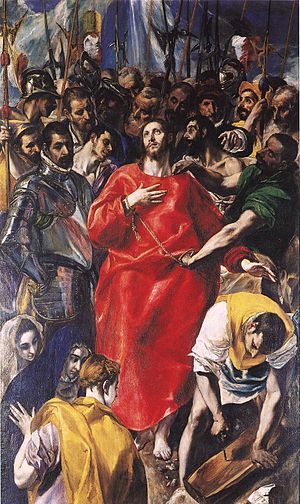 |
| Picture: Philip Mould & Company |
Emma Rutherford, Bendor Grosvenor et al Warts and All: The Portrait Miniatures of Samuel Cooper (1607/8-1672) Philip Mould & Company 2013 £25
I was driven out of the British Museum's print room by another fire alarm last Thursday, so I headed over to the Samuel Cooper exhibition at Philip Mould. The wall text gushes with superlatives, but in this case they're appropriate; he is a far better artist than I'd appreciated, and this is an exquisite and beautifully presented display.
A great achievement of the exhibition is to bring this miniaturist back into the mainstream of British art history. As the catalogue notes, miniatures are often displayed apart from paintings (in London they're even in a different museum - the Victoria and Albert rather than the Tate or National Gallery), and kept under covers that are rarely lifted. But not only is Cooper part of the tradition of British portraiture, for a while he was its supreme exponent. A major revelation is that Cromwell's famous instruction to paint him 'warts and all' was given to Samuel Cooper and not Peter Lely as has generally been assumed. Lely based his famous painting of Cromwell on Cooper's miniature.
The temptation with miniatures is to marvel at their meticulous technique, to wonder at the skill of reducing a portrait to minuscule scale. This exhibition shows that Cooper was an excellent painter as well as an excellent miniaturist. The faces are superb and the poses are sophisticated. The influence of Van Dyck is evident, and perhaps also of Rembrandt. And miniatures by Cooper's contemporaries show his influence and bring into relief his exceptional skill.
The catalogue is excellent. It addresses condition and discusses the difficulty of reproducing these tiny masterpieces. There is some important new research, with well-argued proposals on attribution, dating and sitters as well as the newly identified context for one of the most famous quotations in English history. I'm impressed that a small private gallery can produce something so much better than, for example, the Royal Academy with all its resources can manage for its current Daumier exhibition. I hope it gets distributed more widely.
I worry about the ethics of public galleries lending art to private dealers, because I'm a bit prissy about these things. But in this case it's hard to object. The exhibition is serious and scholarly (as well as beautiful and enjoyable - I don't mean to make it sound dour!), it's free and open to all, and the catalogue is a major contribution to our knowledge of Cooper. But there is inevitably a greater barrier to the public when faced with a grand Mayfair gallery where you have to ring a bell to gain entry, and having agreed to lend to one commercial gallery it is hard to resist the pressure to lend to its competitors. The trade is typically more cavalier in art handling than museums, and the risk of loan terms being disrespected is real - how do you refuse a request to handle a loan if it comes from a client who's just spent a million in your gallery? But these risks are equally prevalent when lending to other museums who are beholden to sponsors and donors. A degree of pragmatism seems appropriate and I think museums were right to lend to this show.
Magnifying glasses are available and much appreciated - something more museums should provide too. Unfortunately many of the miniatures are set too far back in the case for them to be very effective, but it does provide some enhancement. The accompanying muzak is the one real disappointment. We know it's a commercial gallery, but it's still a shame that they have to impose piped music like a department store. Still, this is one of the best exhibitions mounted in London in recent years. Do try to get along before it closes early next month.











